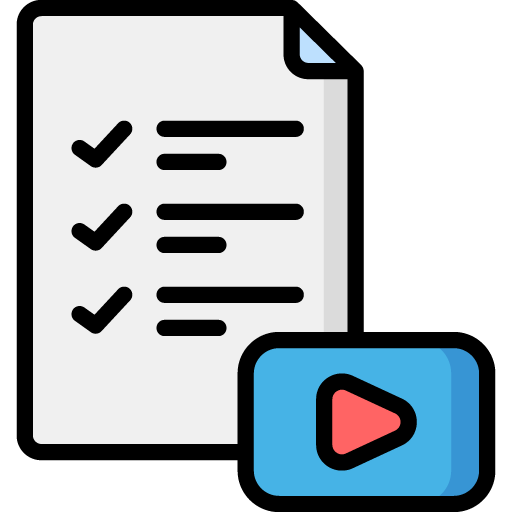Practical Tips on How to Create Content that Aligns with YouTube’s Algorithmic Preferences
Optimizing Content for the Algorithm
Practical Tips on How to Create Content that Aligns with YouTube’s Algorithmic Preferences
Creating successful YouTube content requires more than just hitting “upload.” Understanding how to optimize content to align with YouTube’s algorithmic preferences is crucial for gaining visibility and audience engagement. YouTube’s algorithm is designed to connect users with videos that meet their interests and maintain their attention. It does this by analyzing factors like watch time, click-through rate (CTR), and engagement.
This guide covers essential techniques to help your content work with, rather than against, YouTube’s algorithm. We’ll explore ways to optimize your videos, covering everything from keywords to viewer engagement and analytic adjustments. By following these strategies, you can improve your content’s reach, encourage repeat viewership, and ultimately grow your channel.
Understanding the YouTube Algorithm
YouTube’s algorithm focuses on maximizing user satisfaction and retention, using three primary elements:
- Watch Time: The total amount of time viewers spend watching a video.
- Click-Through Rate (CTR): How often users click on your video after seeing it in their recommendations.
- Engagement Metrics: Likes, shares, comments, and other interactions indicate viewer satisfaction and help promote your video.
The algorithm prioritizes content that keeps viewers engaged, which means creators should focus on high-quality, engaging content and encourage interactions with their audience.
Content Planning Based on Viewer Interest
Creating content that resonates with your target audience is key to keeping viewers interested. Here’s how to plan audience-centered content:
- Audience Analysis: Use YouTube Analytics to understand your audience’s demographics, interests, and viewing habits.
- Trending Topics and Seasonal Content: Creating videos around trending topics or seasonal events can help your content stay relevant.
- Series and Playlists: Series keep viewers returning to your channel, while playlists encourage binge-watching, increasing watch time.
Planning videos that address your audience’s preferences will not only boost watch time but also build loyalty among your subscribers.
Optimizing Titles, Thumbnails, and Descriptions
First impressions matter, and YouTube’s algorithm factors in CTR heavily. Here’s how to improve CTR through optimization:
- Eye-Catching Titles: Use clear, descriptive titles with relevant keywords. Avoid clickbait; instead, aim for intrigue.
- Custom Thumbnails: Thumbnails can significantly impact CTR. Choose bright, clear images that focus on faces or emotions, and use minimal text.
- Detailed Descriptions: Your description should include primary keywords within the first few lines, followed by relevant links or calls to action. This helps YouTube understand your content’s relevance.
Optimizing these elements increases the chances of your video being clicked on, which positively impacts your ranking.
Keyword Research and Tagging for Visibility
Conducting keyword research and using tags can improve your video’s discoverability. Here’s how:
- Keyword Tools: Use tools like TubeBuddy or VidIQ to find popular search terms related to your topic, balancing high search volume and low competition.
- Primary and Secondary Keywords: Place primary keywords in your title, description, and tags. Use secondary keywords that enhance discoverability.
- Relevant Tags: Use tags that accurately represent the video’s content. Overloading tags with irrelevant keywords can negatively affect your ranking.
Keywords are vital in helping the algorithm categorize your video and recommend it to users with related interests.
Watch Time and Audience Retention
Audience retention is a key metric for YouTube. Videos that keep viewers engaged for longer are more likely to be recommended. Here’s how to improve retention:
- Captivating Introductions: Hook viewers within the first 10 seconds, using a question, surprising fact, or preview of what’s to come.
- Structured Content: Organize videos into clear sections. Use timestamps to improve navigation and maintain engagement.
- Avoid Filler Content: Keep your content concise and valuable, avoiding unnecessary parts that could cause viewers to drop off.
Improving retention encourages viewers to watch longer, which the algorithm rewards with better visibility.
Engagement Through Comments, Likes, and Shares
Engagement metrics help the algorithm gauge viewer satisfaction. Encourage viewers to interact with your content in the following ways:
- Call-to-Action (CTA): Ask viewers to like, comment, or share if they enjoyed the video.
- Pinned Comments: Use pinned comments to ask questions or start conversations.
- Respond to Comments: Show your audience that you value their input by replying to comments and encouraging further interaction.
The more interaction your video receives, the better it will perform in YouTube’s recommendations.
Publishing Consistency and Schedule
Consistency signals to YouTube that your channel is active and keeps subscribers coming back. Here’s how to maintain a steady publishing schedule:
- Set a Schedule: Decide on a consistent upload day and time, whether it’s weekly, bi-weekly, or monthly.
- Batch Filming and Editing: Prepare content in batches to maintain a backlog of videos, helping you stick to your schedule.
- Notify Subscribers: Use the Community tab or social media channels to keep subscribers updated on new uploads.
A steady flow of content increases the likelihood of subscribers returning and boosts your channel over time.
Analytics Tracking and Data-Driven Adjustments
Using analytics to guide your content decisions can help you maximize growth. YouTube Analytics offers valuable insights:
- Audience Retention Reports: Analyze where viewers drop off to adjust content structure and style.
- CTR and Engagement Metrics: If CTR is low, adjust thumbnails or titles; if engagement is low, encourage comments or shares in future videos.
- Compare Performance Over Time: Track your videos’ performance over different periods to understand what’s working.
Analytics allow you to make data-driven improvements, helping refine your strategy to better align with algorithm preferences.
Conclusion
Optimizing content for YouTube’s algorithm isn’t about shortcuts; it’s about understanding the platform’s priorities and consistently delivering valuable content. By focusing on high CTR, strong retention rates, relevant keywords, and active engagement with your audience, you set your content up for success. Patience, regular posting, and a commitment to learning from analytics are essential to growing your channel effectively.
For more insights on how to build a successful channel, check out some of our other resources on YouTube strategies.







 Edit Your Footage
Edit Your Footage
Leave a Reply